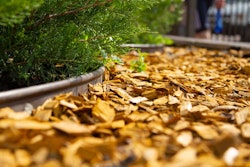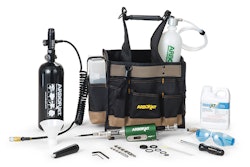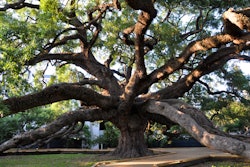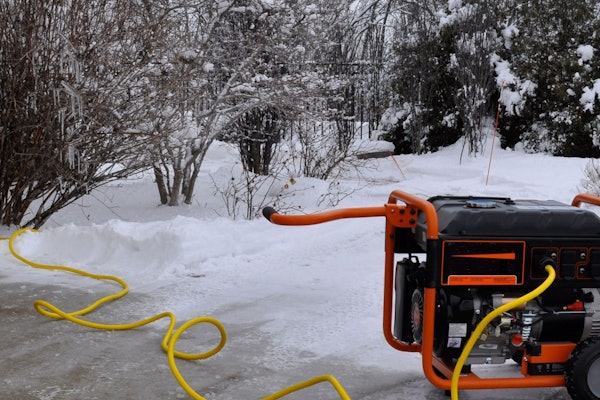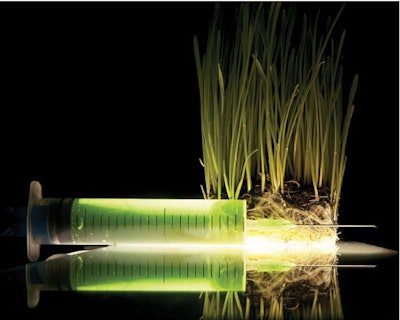
Proper cultural practices are the best defense against turfgrass disease and the misapplication of fungicides.
By Cindy Ratcliff
There are some 100 different diseases that affect turfgrass, each with a different method of cure and prevention. Trying to customize a program that defends against each specific disease would be impossible.
There is a better way.
Your best defense against turf disease is to create a healthy, vigorous turf through proper cultural practices (correct mowing height, irrigation schedule, fertility program). The healthier the turf, the less likely it is to become diseased. Prevention should rely on these cultural practices first, with fungicides applied only when necessary.
When environmental factors come into play that make it almost impossible to stave off turf disease, you also need to know when and how to introduce fungicides, adjust your turf care regimen to compensate for conducive conditions and minimize injury to turf.
Control environment
“Cultural practices should create an environment that does not promote disease development,” says Philip Harmon, assistant professor, plant pathology at the University of Florida. “While it’s not possible to change weather patterns or the overall environment, it is possible to change localized environments.”
In lawns, dollar spot disease typically appears in irregular circles, 3” to 6” in diameterHarmon recommends implementing the following practices designed to alter the turfgrass environment to promote health and prevent disease or, at least, lessen its severity.
- Turfgrass selection. Select turfgrass species and cultivars based on location and how the turf will be used and maintained. For example, if the site is shady, choose a turf that can tolerate it.
- Mowing practices. Make sure mower blades are sharp so they are cutting turf and not just tearing it. Also, pay close attention to the mowing height (ideal length is species dependent), removing no more than one-third of the leaf in one mowing.
- Water management. Irrigation amount and timing can prevent or contribute to disease. Irrigate when dew is already present, usually in the predawn hours.
- Nutrition. Excessively high or low nitrogen (N) rates can both contribute to turf disease. Find the balance by first applying the minimal amount to see how turf responds and gradually increasing it, if needed.
- Thatch and aerate. Removing excessive thatch and routinely aerating turf helps ensure drain age and provides better access for fertilizer.
Get a second opinion
If turf is looking a little off, don’t jump to the conclusion that it is suffering from a disease. A few patches of spots in turf do not necessarily indicate the lawn is diseased.
“Disease shouldn’t be your first guess when something is wrong,” Harmon says. “Because turfgrass diseases are difficult to diagnose, it is often faster to rule out involvement of other factors than to verify the presence of disease.”
Many things can mimic disease symptoms, including drought stress, chinch bug damage, nematodes, etc.
“Scouting for insects may be a good first step to take when you discover a problem with turf. You should also evaluate irrigation and timing. Doing a little investigative work can often solve the problem more quickly and avoids the application of unnecessary fungicides,” Harmon says.
If you rule out other causes for turf decline and suspect disease, an accurate diagnosis is critical for planning a treatment. Many universities have online resources with photos that can help you identify a disease, but your best bet is to employ a laboratory for diagnostics (see sidebar, below).
Shake the disease
Once you identify the disease, look for conditions that promoted its development and identify management techniques that will alter the environment to prevent future occurrences.
Consider if turf has new areas of shade, analyze fertilizer application timing, type of fertilizer, soil type or the possibility of excessive irrigation. Often, you do not have control of all of the management practices that could be supporting disease, so check with clients to see if irrigation and mowing recommendations are being followed.
“For us, one of the biggest factors in preventing disease is educating our customers,” says Joe East, technical support for Truly Nolen of America, a pest control company with franchises across the country. While East, located in Florida, provides lawncare services, he is not directly responsible for his clients’ routine maintenance, such as mowing or irrigating, which they either do themselves or hire out to a landscape contractor.
“We inform our consumers about irrigation issues, over- or under-watering, which can really impact disease control,” he says. “Most residents here in Florida are not from Florida and aren’t familiar with how to take care of the St. Augustine grass that grows here. If we educate them, we can better control disease without applying a bunch of fungicides.”
East says his clients’ most common mistake when it comes to their St. Augustine lawns is applying too much “weed-and-feed” product, exposing turf to large doses of atrazine, which can encourage gray leaf spot.
Chemical control
Often, changing cultural practices can be enough to rid turf — especially already healthy turf — of disease. Other times, these changes should be paired with the use of fungicides, especially for those diseases that spread rapidly and can take down large patches of turf.
Preventive use of fungicides is merited if you know that you have a disease problem in a section of grass that has a history of being problematic, according to Harmon.
“The most sensible approach is to make applications for at least two consecutive years and watch the third year for symptoms,” he says. “If they begin to develop, look again at your cultural practices for things you could change to weed yourself of the fungicide.”
East recommends dividing a client’s property into zones and mapping out a historical reference of where and when disease has occurred. “That way, we know which ones to watch, and we can do a treatment in that area, limited to the zone.”
Predict to prevent
In addition to adjusting cultural practices to accommodate changing environmental conditions, learn to predict when weather conditions make turf especially susceptible to disease.
“Weather patterns that result in afternoon showers and prolonged cloudiness really provide the perfect conditions for disease,” Harmon says. “Under these conditions, turf is going to stay wet overnight. If this happens several days in a row, with limited sunlight for dry out and growth, it means that the environment is ideal for fungus.”
Lab partner pays
Accurate identification of turf disease is critical for developing a treatment plan. Don’t leave it to chance. Many universities offer lab services that can quickly identify pathogens and disease.
The University of Florida, for example, has two options for turf managers looking for services, according to Philip Harmon, assistant professor, plant pathology at the university. Standard services cost $40 and can make a positive identification in three to five days. Need it faster? For $75, the lab also can provide a rapid turf diagnostic service. With this option, you get results in 24 hours with a 90- to 95-percent degree of accuracy. The lab then follows up with the complete standard report in a few days that confirms the diagnosis, Harmon says.


